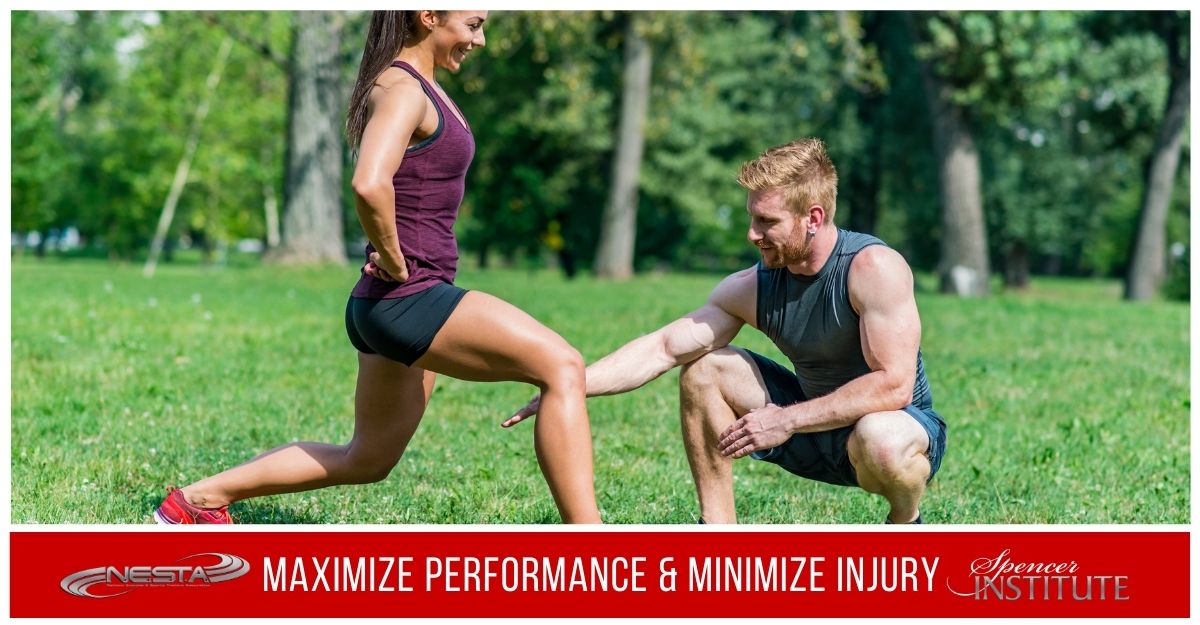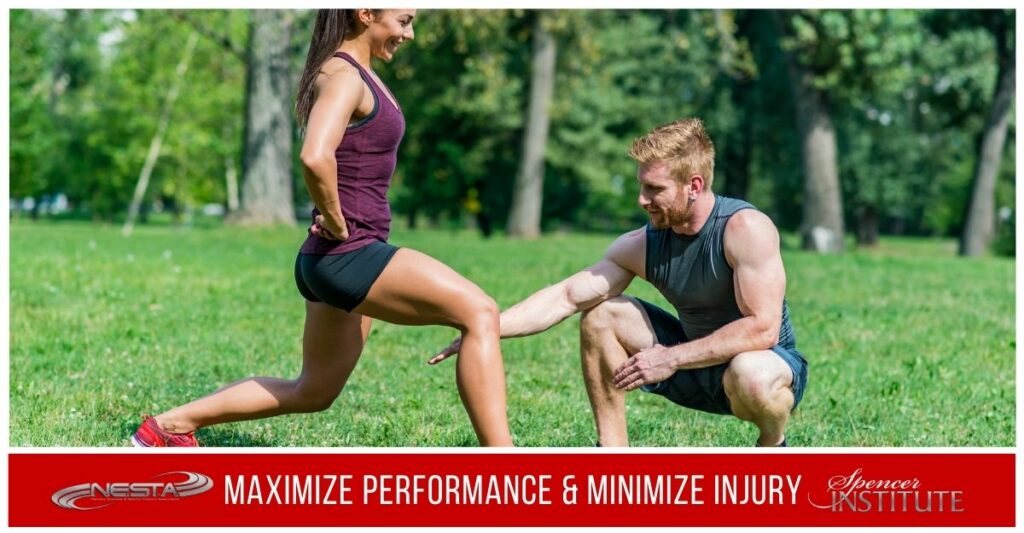How do we use Biomechanics to Maximize Performance and Minimize Chance of Injury?

There is a systematic thought process that every trainer must utilize in order to ensure that their clients are getting the most of every rep in every set. We analyze and optimize movement in order to maximize performance and minimize injury.
What do we Analyze?
When we evaluate the client’s technique, we are doing a biomechanical analysis (and remember, every rep of every set is an assessment). You should be able to distinguish between what is important and what is unimportant, what is correct and what is incorrect, what is possible and what is impossible, what is effective and what is ineffective, what is safe and what is unsafe, etc.
The first thing to evaluate and understand is the movement itself, without regard to the forces that caused it. In physics, this is known as kinematics. This would be analyzing such details as the Osteokinematics (planes of motion), the direction of motion, the path of motion, and the range of motion. Furthermore, a kinematic analysis might include basic kinematic variables such as distance, speed, and acceleration (which you will learn shortly).
Only after you analyze the kinematics do you look at the forces that cause the movement (as well as other forces on the body). In physics, this is known as kinetics.
Another way of looking at the analysis process is to look at joints first (both moving and not moving, describing them kinematically), then the external and internal forces on the body (kinetics). Note, muscles are engineered to move joints in a particular fashion (based on the structure of the joint). So a basic understanding of joint structure and function is essential for prop- er muscle activation (i.e. if we are moving the joints properly, then the muscles must be working properly). Furthermore, we don’t really know which internal forces are developed without first looking at the external forces that caused it.
How do we Analyze?
While it is unlikely that you will be using advanced biomechanical analysis tools with your clients, there is a step-by-step process to do a qualitative biomechanical analysis recommend- ed by McGinnis (2005).
Step 1: Describe the Ideal Technique
In order to train anyone in a particular movement, you must have a fundamental knowledge of the skill. This begs the question, how do we know the “ideal” technique? If it’s a performance movement, such as pitching a fastball, you’ll want to watch successful pitchers, read coaching journals and textbooks, and find any other sources that discuss how successful individuals apply their skills.
More likely, you’ll be describing some sort of exercise or drill. Once again, you’ll use the same strategy of researching what the “ideal” technique is. That said, whether you are describing a sports-specific skill or an exercise, you must think critically and be skeptical of the “experts”. Just because one person is successfully doing a bench press in a particular fashion doesn’t mean everyone should use the same technique. Please remember that your job is to individualize the technique to the individual. It should be customized to their current abilities, their genetics, and their goals.
The bottom line is when you are researching to describe the ideal technique, you are really at- tempting to find the common characteristics of the most efficient technique and to appropriately modify these characteristics with your clients.
Step 2: Observe the Client Performing the Technique
When observing a client perform a particular technique, we have to ask ourselves several questions.
- Who are we observing? What is their current skill level? What are their current limitations?
- Under what conditions?
- Where to observe?
- What to look for?
The answers to these questions will determine your ability to successfully evaluate the client.
Step 3: Evaluate the Performance
When evaluating the performance, we are simply comparing the “ideal” with the actual performance of the client. We are identifying errors and evaluating those errors to determine the focus of your correction efforts. As the old expression goes, “you have to pick and choose your battles.” Is the error actually dangerous and there is a risk of injury? Or, is it a new client learning a new skill that will take time to develop the proper motor pattern?
How do we Optimize?
Step 4: Instruct the Client
This is where proper communication skills are vital so you can successfully communicate with the client and correct the errors in technique.
What do we Optimize?
Again, we focus on both the movement (kinematics) and the forces that cause the movement (kinetics). We take into account the structure of the body (specifically, the anatomy of the joints first), its intended function, and the goal of the exercise. We need to understand the ideal movement and instruct accordingly. Our goal is to get our clients as close to the ideal technique (which may be unique to them) in order to Maximize Performance and Minimize Injury.
Starting Your Training Career
Now it’s your turn to take action. Did you know that most fitness careers don’t require formal education or a degree?
Learn more about the variety of fitness industry careers. There is always something exciting about earning a new training or coaching certification and applying that new knowledge of how you train your clients. This also helps you hit the reset button.
Click here for a free in-depth video training on biomechanics and human movement.
Become a Certified Biomechanics Specialist, so you can enhance your knowledge, produce better results for your clients, and expand your fitness career options.
Check out what it takes to start a career in personal fitness training. This is your most affordable and fastest way to become a highly qualified personal trainer.
Is your recertification coming up? Learn more about earning your CEU credits. You can find the full list of CEU courses here.
If you are ready to start your online personal training or coaching business, don’t forget to learn more about our online coaching course. You will also really enjoy this very comprehensive training course called Online Expert Empire.
There is always something exciting about earning a new training or coaching certification and applying that new knowledge of how you train your clients. This also helps you hit the reset button.
NESTA and Spencer Institute coaching programs are open to anyone with a desire to learn and help others. There are no prerequisites.
Thanks for reading!
The NESTA/Spencer Institute Team
PS: Click here to see many helpful business/career resources








